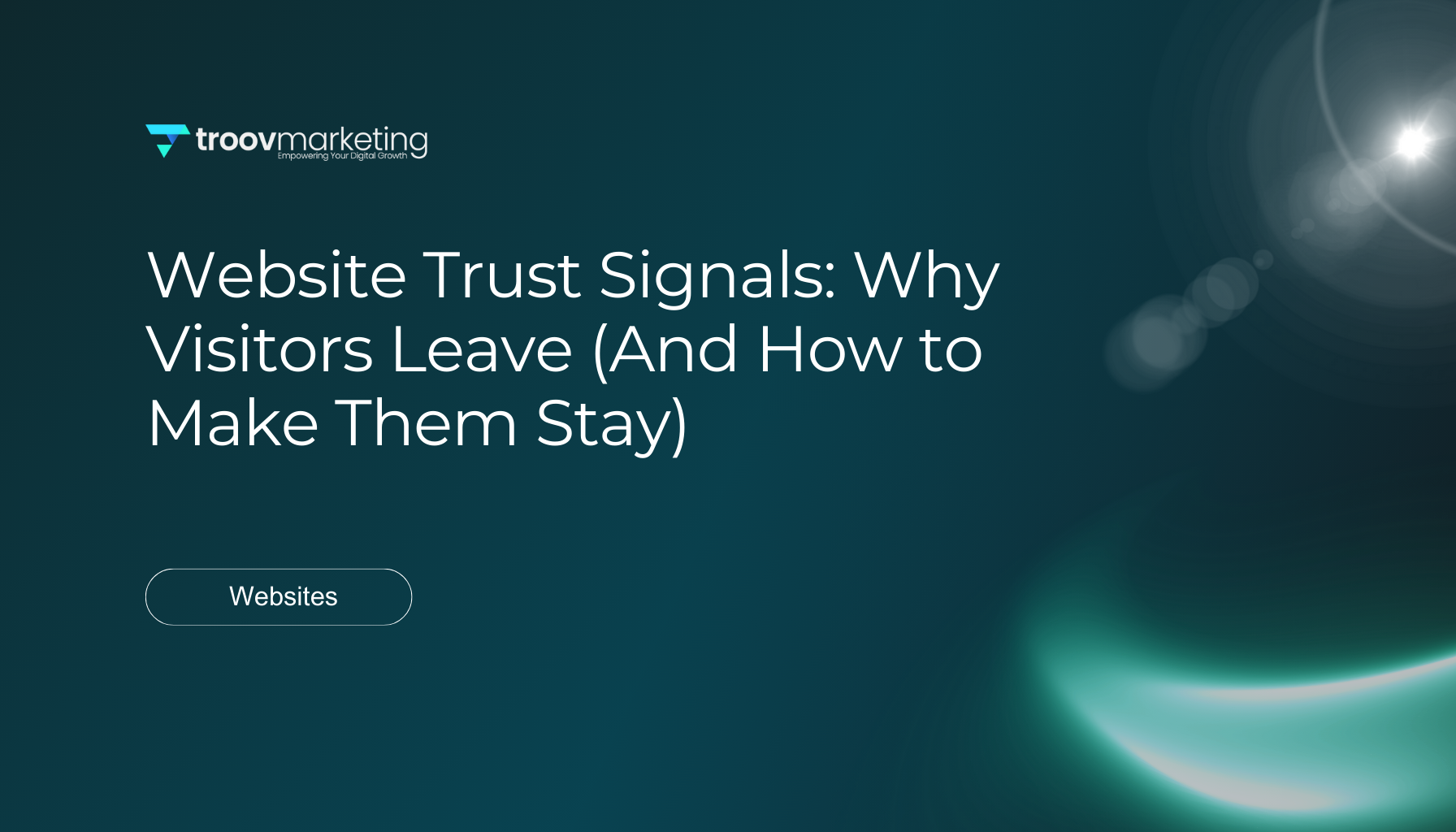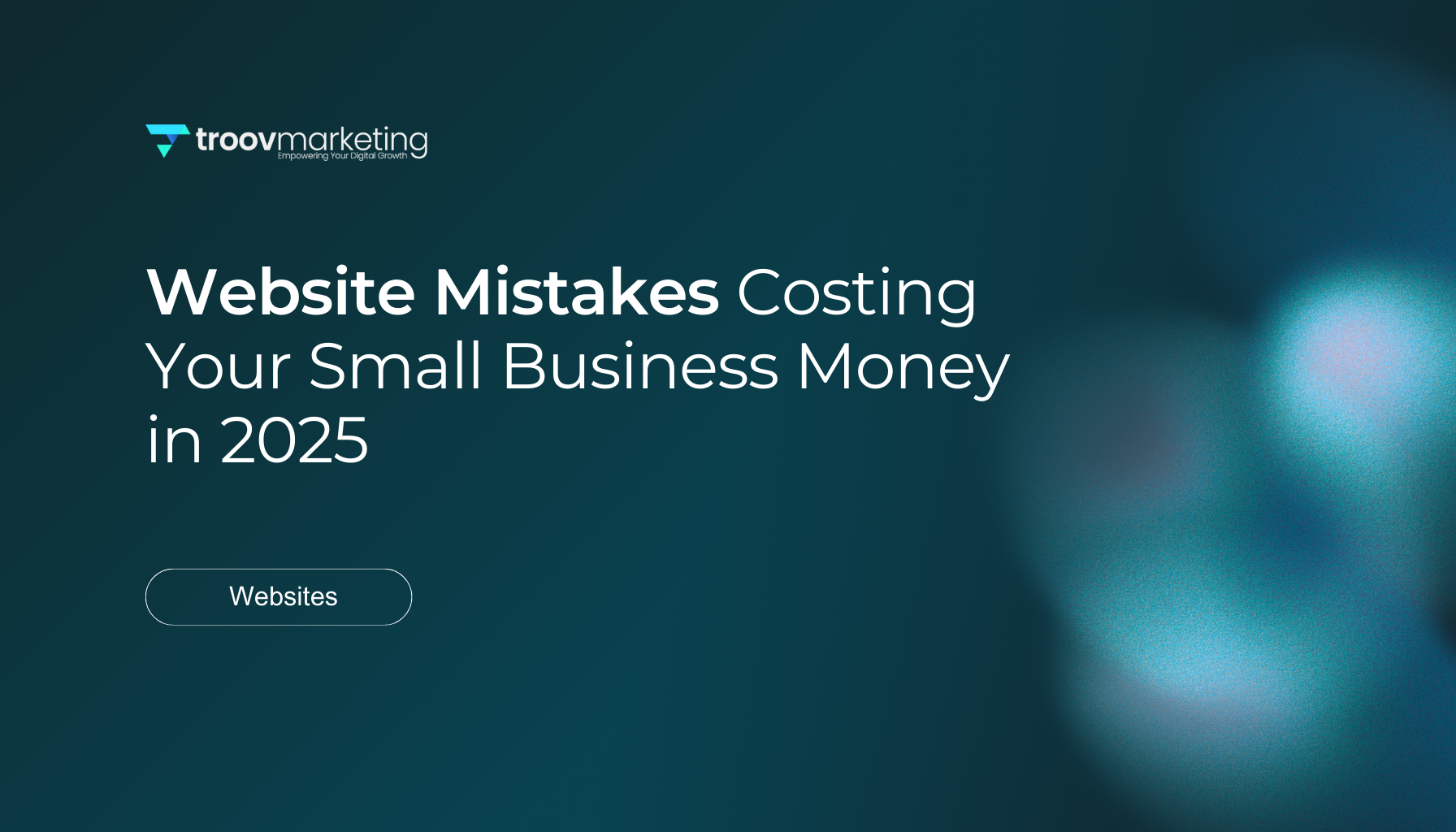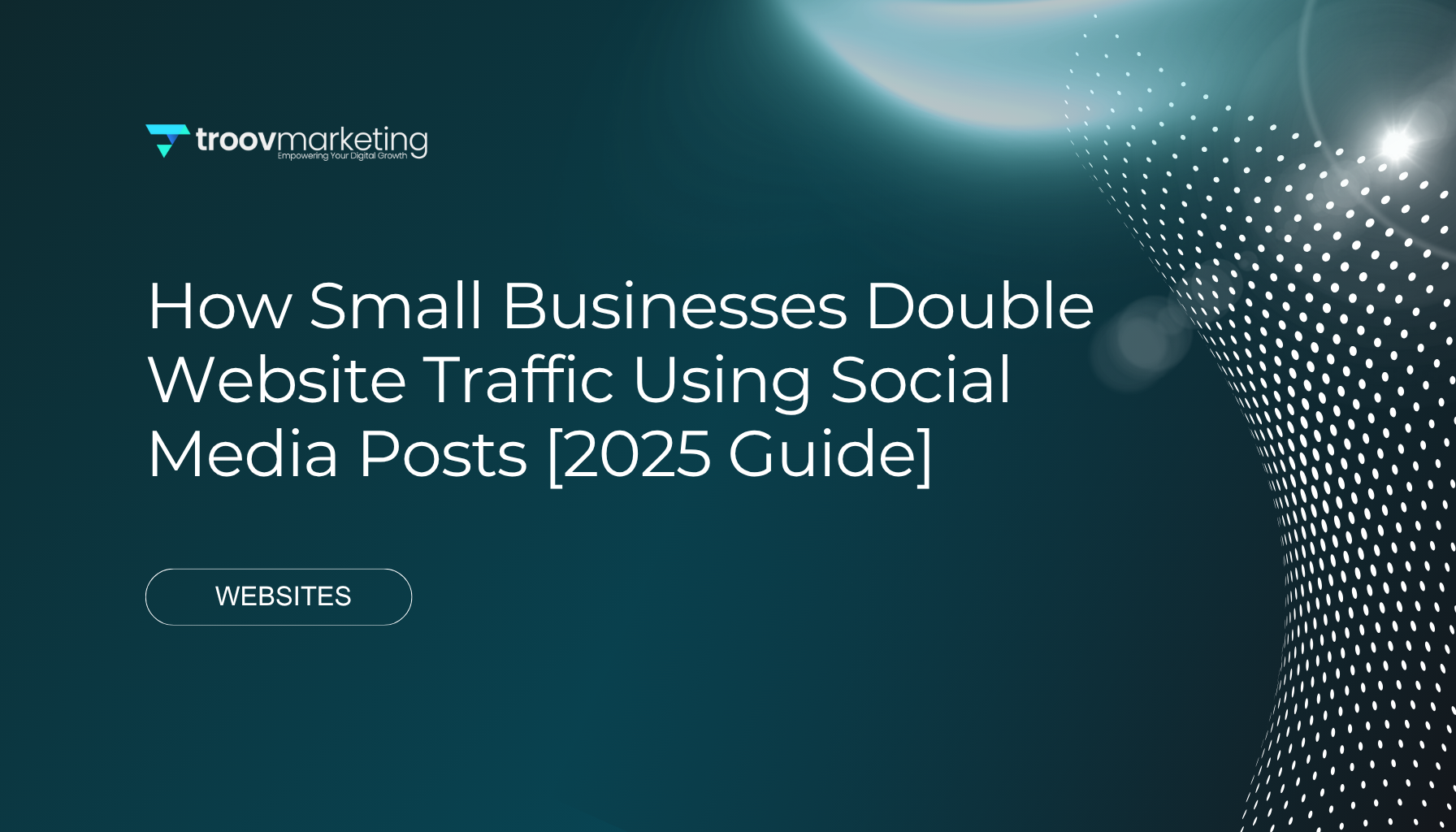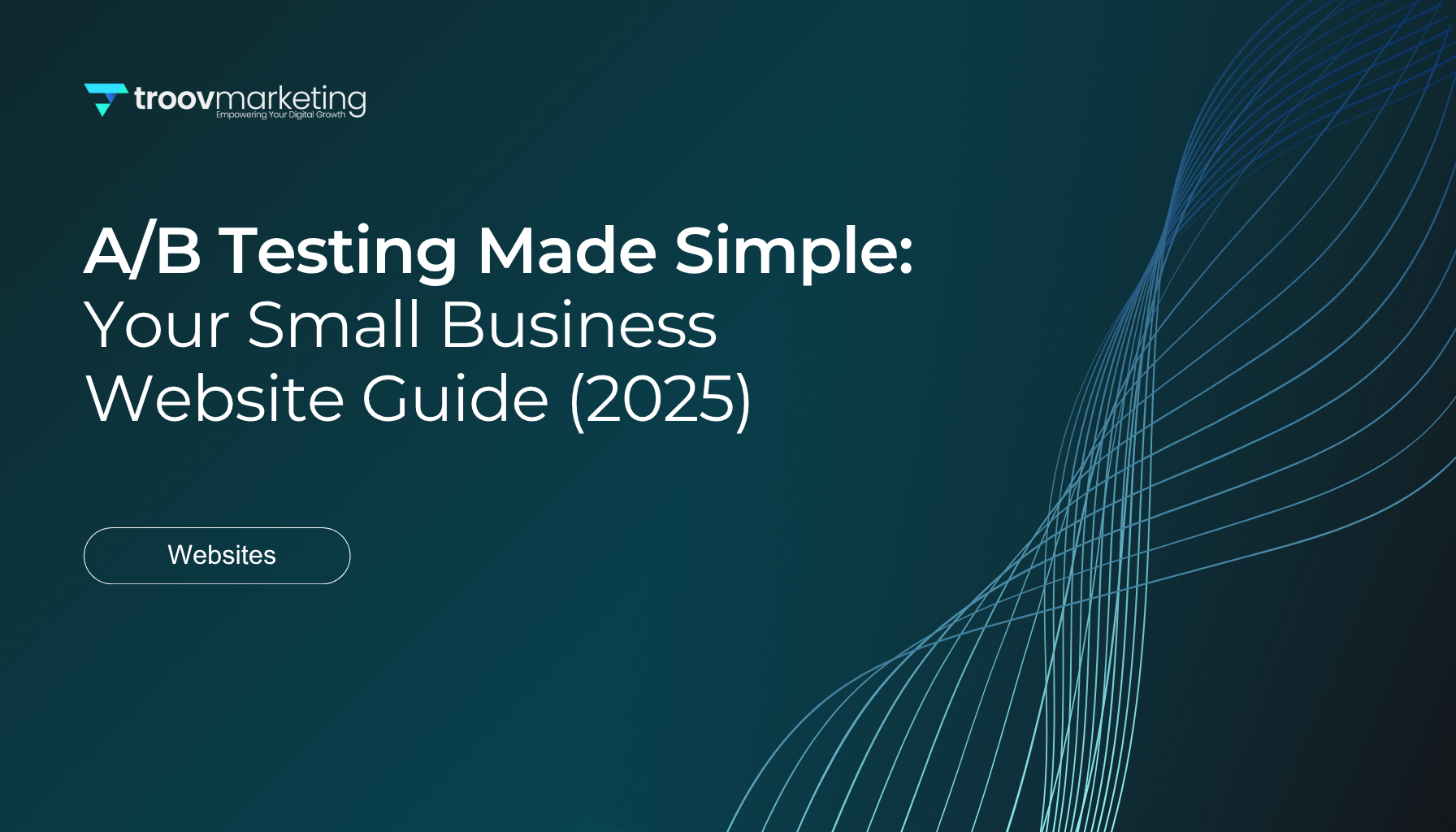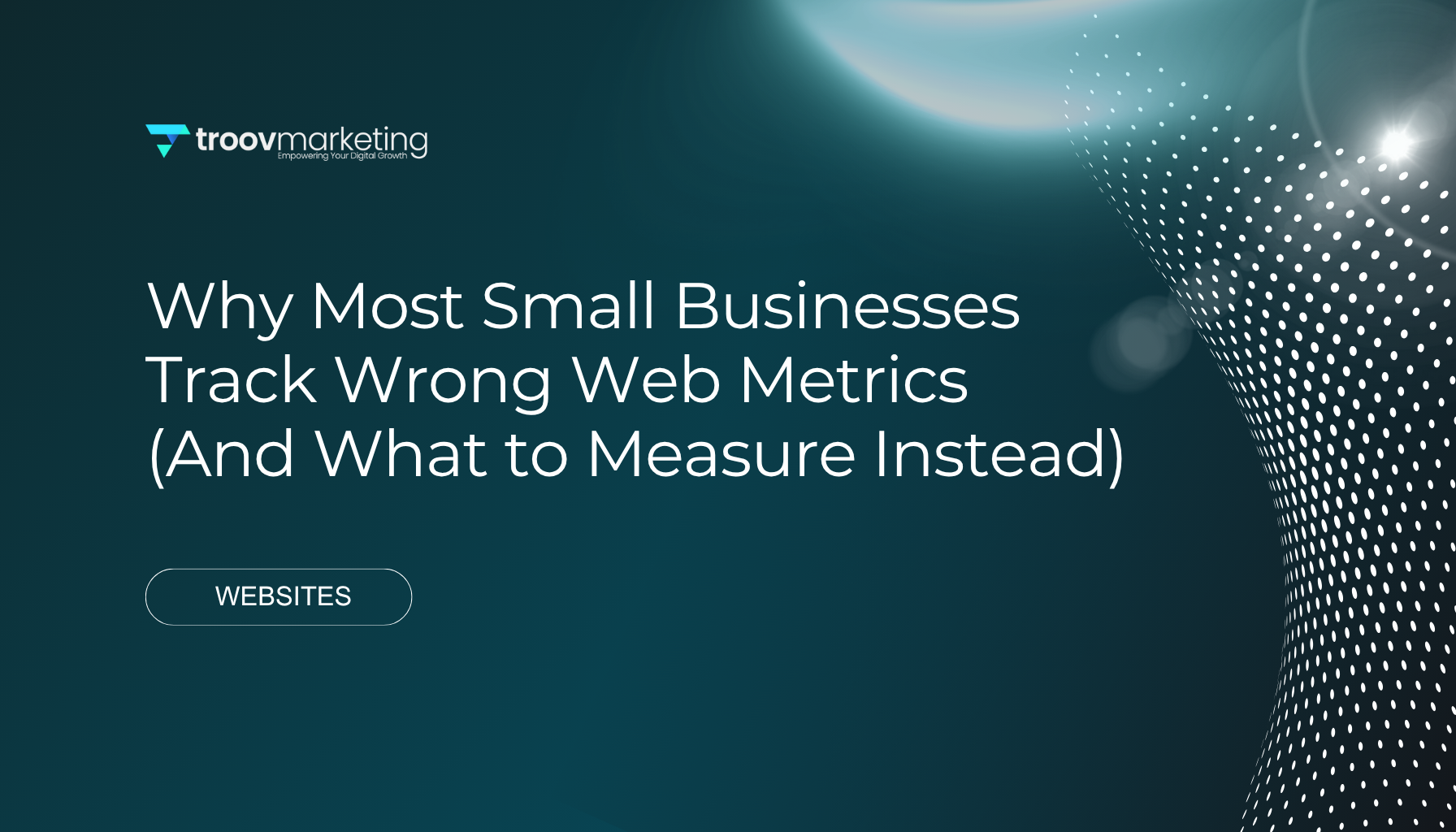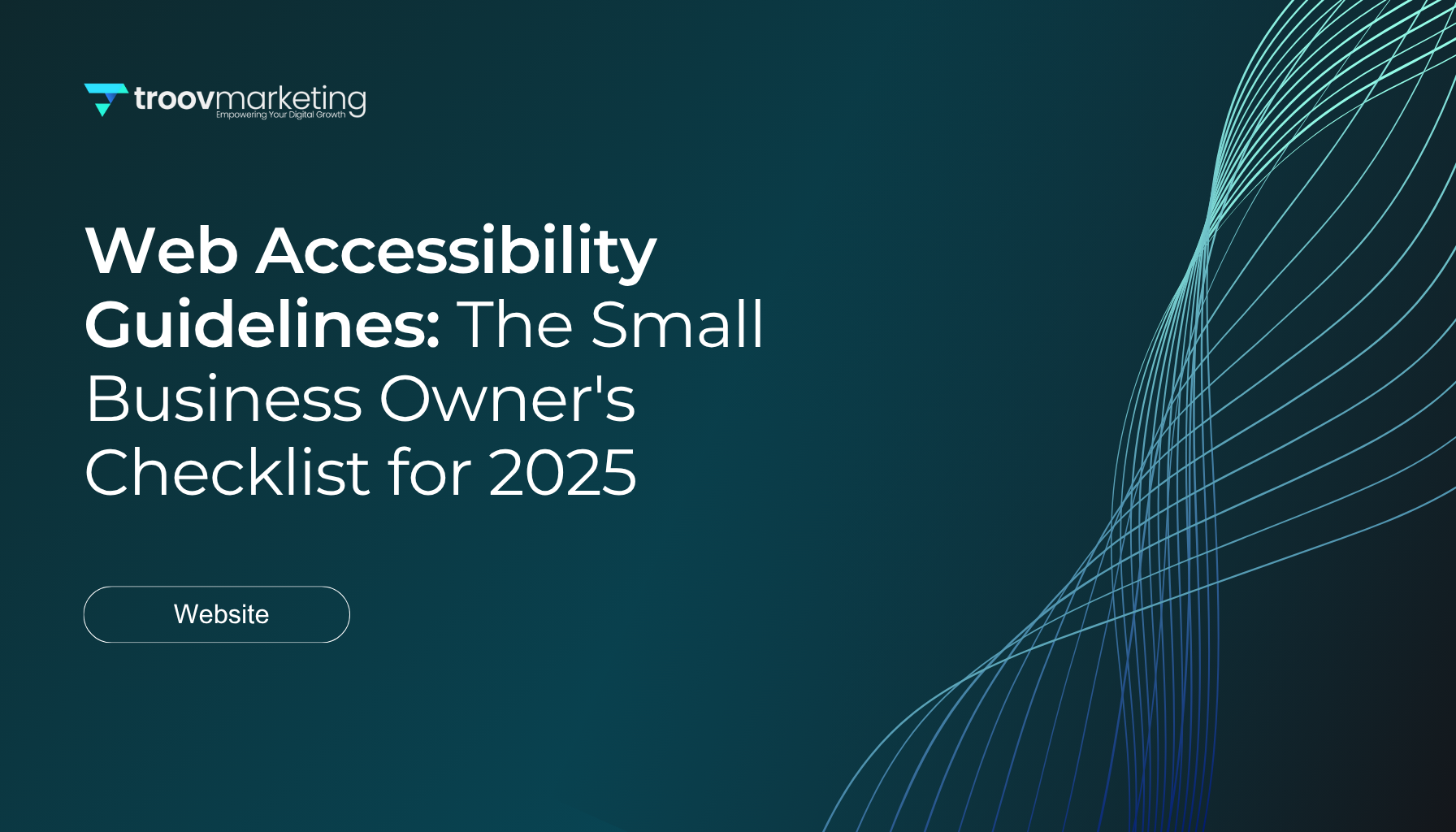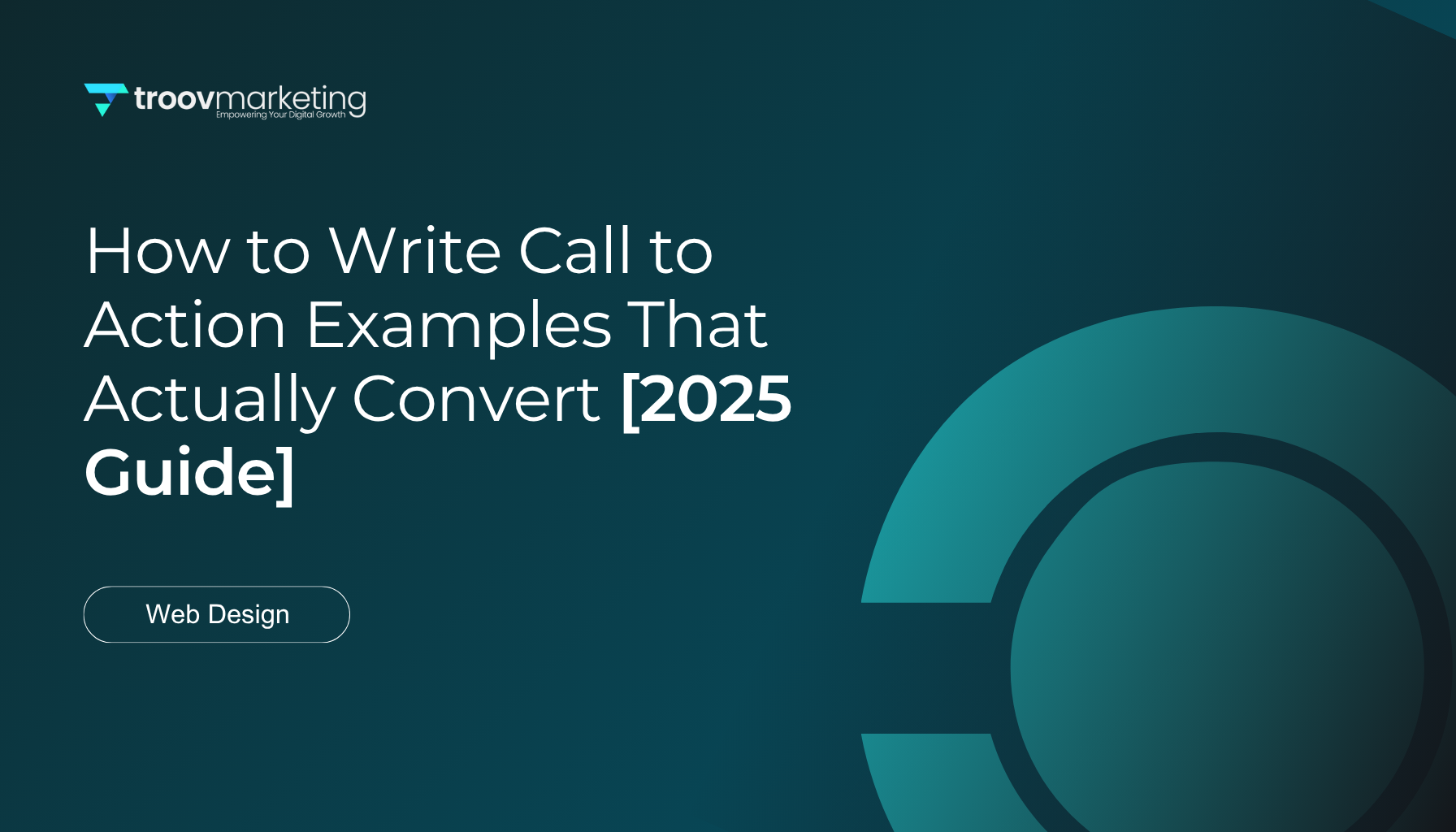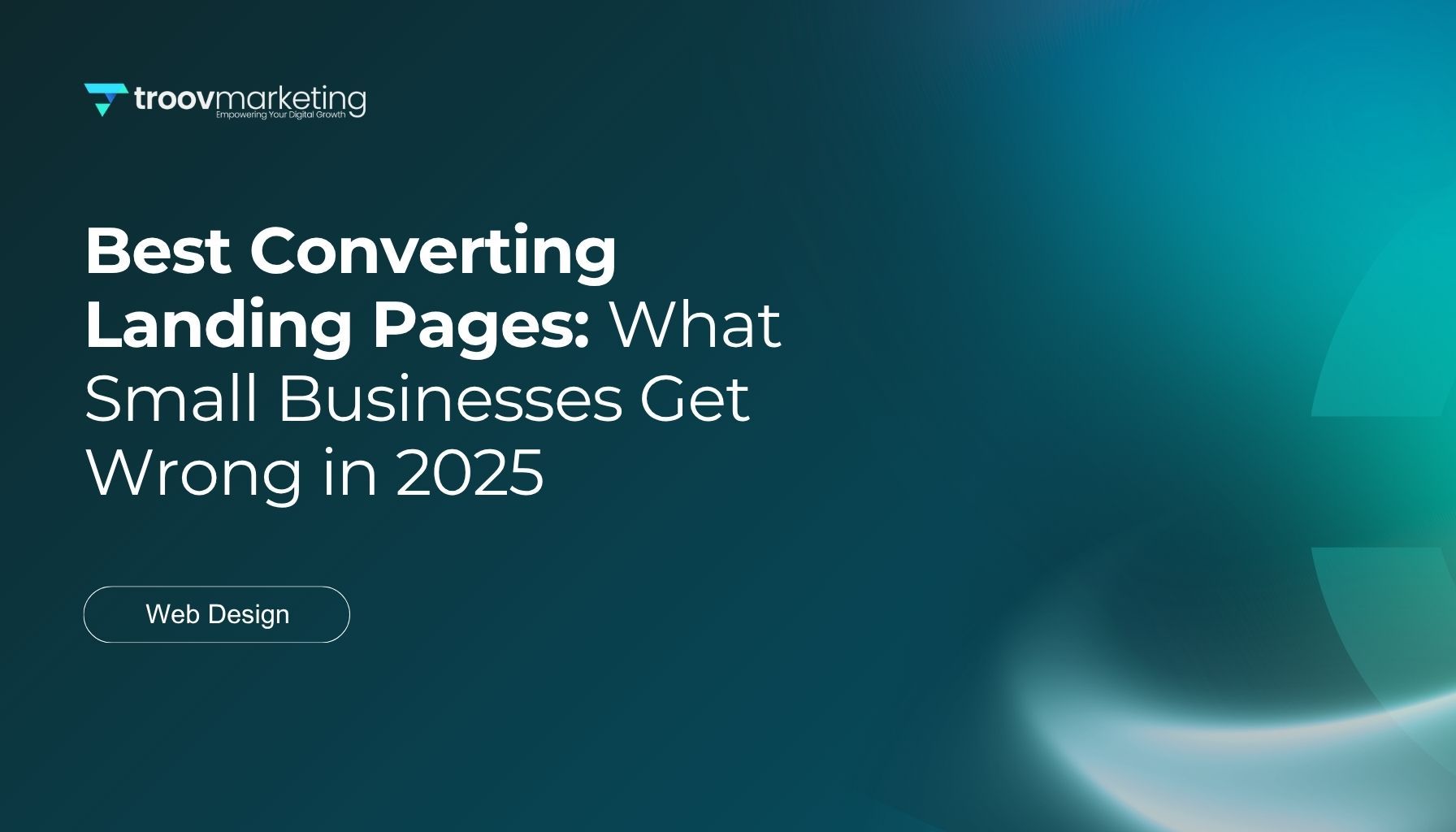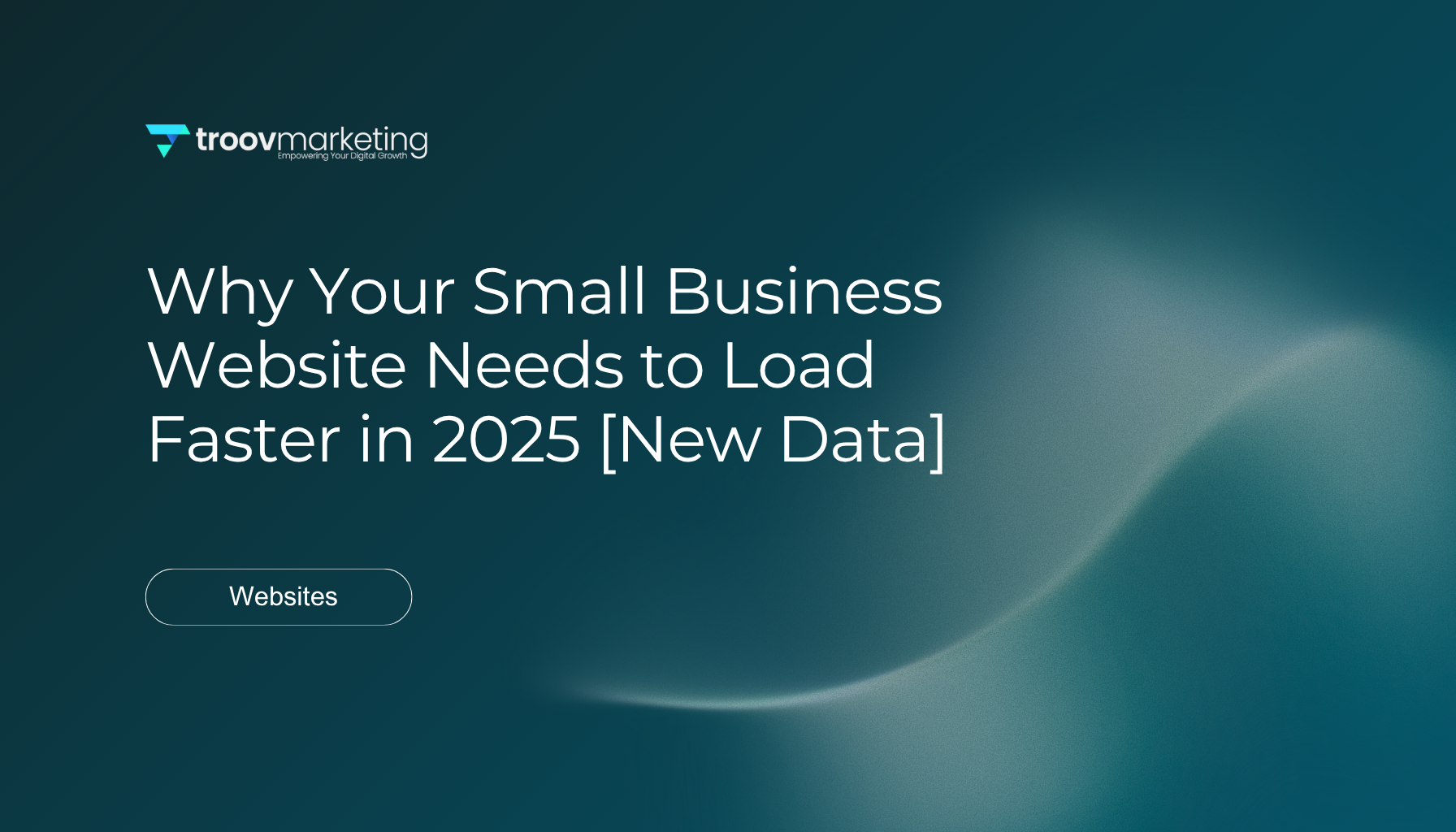12 Best Web Design Services for Small Business in 2025 (Expert Tested)
Looking for the perfect web design services for your small business? You're not alone — and the stakes are higher than you might expect.
Your website serves as more than just a digital business card. It represents your business's face in the digital world, where 98% of consumers look up information about local businesses. The US online shopping market expects to reach 218.8 million shoppers in 2023. A complicated checkout process causes 21% of customers to abandon their carts. Your website's design plays a crucial role in your revenue generation.
My experience spans hundreds of websites built for businesses of all sizes in the last decade. Small business website design doesn't need complexity. The best website developers understand your specific needs and goals. They create solutions that help you build trust and establish credibility with potential customers.
This piece walks you through the 12 best small business website development options for 2025, each tested and verified by experts. You'll find options that match your needs, whether you want affordable or professional web design services with all the features. We've explored everything from Wix's user-friendly interface to Squarespace for service-based businesses and Shopify for eCommerce. This comprehensive overview will help you choose the right platform.
Squarespace
Squarespace stands out as an all-in-one website builder that blends stunning design with business functionality. My experience with web design services for small business shows that Squarespace delivers professional results even if you have limited technical expertise.
Squarespace key features
Squarespace has a complete suite of tools that are valuable for small business website development:
- Award-winning templates with customizable content areas for professional-looking designs
- Unlimited storage and bandwidth on all plans
- Mobile-responsive sites that automatically adjust to any device
- Fully integrated e-commerce capabilities on most plans
- Drag-and-drop editor to customize without coding
- SEO tools including customizable metadata and sitemaps
- Blueprint AI to help build a stylish website in minutes
- Acuity Scheduling tool to manage bookings and appointments
Squarespace has marketing tools like email campaigns, promotional pop-ups, and social media integration to grow your business online.
Squarespace pros and cons
Pros:
- Create professional websites with limited design skills
- Accessible interface with natural drag-and-drop functionality
- All-in-one solution with hosting, domain, and email
- Excellent security with SSL certificates included
- No plugins needed, which reduces security vulnerabilities
Cons:
- No phone support, just chat and email assistance
- No free plan, unlike some competitors
- Limited customization on the Personal plan (no CSS/JavaScript)
- Loading speeds can be slower than competitors
- Limited to one sub-navigation menu
Squarespace pricing
Squarespace has four pricing tiers with monthly or annual billing options. Annual payments range from AUD 24.46 to AUD 79.51 per month:
- Personal Plan: AUD 24.46/month - simple website features, no e-commerce
- Business Plan: AUD 38.22/month - adds e-commerce with 3% transaction fee
- Basic Commerce: AUD 51.99/month - zero transaction fees, point-of-sale capability
- Advanced Commerce: AUD 79.51/month - additional features like abandoned cart recovery
Each plan comes with a 14-day free trial. Annual plans include a free custom domain for the first year.
Squarespace best for
My experience shows that Squarespace excels in specific small business website development needs:
- Service-based businesses like salons, gyms, and financial services
- Creative professionals including artists, photographers, and designers
- Small e-commerce stores with limited product lines
- Restaurants and local businesses that need location management
- Businesses valuing design esthetics over complex functionality
Squarespace shines especially when you have an elegant website that balances professional design with user-friendly tools. The all-in-one approach eliminates the need to manage multiple services. This makes it perfect for time-conscious small business owners who want professional web design services.
Shopify
Shopify stands out as a powerful ecommerce platform that small businesses choose to sell online. My experience shows how entrepreneurs have grown their product-based businesses using Shopify's detailed tools and accessible interface.
Shopify key features
Shopify provides a complete ecommerce ecosystem for small business website development:
- AI-powered design tools that generate tailored themes and product listings
- World-class checkout system that converts 15% better than other platforms
- Unlimited product listings and bandwidth across all plans
- Integrated payment processing through Shopify Payments or 100+ third-party providers
- Point-of-sale integration that syncs online and physical store inventory
- Mobile-responsive designs from 100+ professionally designed themes
- Built-in marketing tools including email campaigns and abandoned cart recovery
- Extensive app store with 8,000+ third-party applications
- 24/7 customer support via email, live chat, and phone
On top of that, it lets you access your site's API to customize features as your business grows.
Shopify pros and cons
Pros:
- Simple interface that non-technical users love
- Detailed security with PCI compliance built-in
- Discounted shipping rates from major carriers
- Smooth integration with social media, marketplaces, and in-person selling
- No transaction fees with Shopify Payments
Cons:
- Extra transaction fees (0.5%-2%) with third-party payment processors
- Monthly costs rise with premium apps and themes
- Simple blogging features compared to dedicated CMS platforms
- Custom changes might need knowledge of Liquid (Shopify's templating language)
- Moving to other platforms can be tough
Shopify pricing
Shopify's plans come with annual billing discounts. Current pricing (as of August 2025):
- Basic: AUD 44.34/month (annual) or AUD 64.22/month (monthly) - ideal for new businesses
- Grow: AUD 120.79/month (annual) or AUD 174.30/month (monthly) - for small teams
- Advanced: AUD 457.17/month (annual) or AUD 658.99/month (monthly) - for scaling businesses
- Plus: Starting at USD 2,300/month - for enterprise-level needs
New users can try Shopify at AUD 1.53/month for three months.
Shopify best for
My work with website developers for small business shows Shopify works best for:
- Product-based businesses selling physical or digital goods
- Omnichannel retailers needing integrated online and offline sales
- Growing businesses that plan to scale quickly
- Entrepreneurs looking for an all-in-one ecommerce solution
- Businesses with international customers as Shopify supports multiple currencies and languages
Shopify shines brightest for serious ecommerce operations where professional web design services balance looks with strong selling features. Businesses of any size—from startups to enterprises—benefit from its flexible nature, though you'll get the best value once you process a good volume of orders.
Webflow
Webflow equips small businesses with unmatched design control. It stands out as a visual development platform rather than a simple website builder. After testing dozens of platforms, I'd say Webflow hits the sweet spot between drag-and-drop simplicity and developer-level customization.
Webflow key features
Webflow stands apart from other small business website development tools through its powerful visual editor:
- Visual design interface that gets you clean HTML, CSS, and JavaScript automatically
- Reliable content management system that lets businesses handle dynamic content easily
- Custom animations and interactions without coding knowledge
- Reusable design components that keep your brand consistent across your site
- Built-in SEO tools with customizable meta tags and automatic sitemaps
- Integrated hosting powered by Amazon Web Services and Fastly CDN
- E-commerce capabilities with customizable product pages and checkout experiences
- No-plugin architecture that creates stable websites with fewer security risks
Your websites adapt automatically to mobile devices, which ensures a smooth experience on all screen sizes.
Webflow pros and cons
Pros:
- Complete creative control without coding requirements
- Immediate visual editing with instant preview of changes
- Optimized workflow that saves development time
- Features that make team projects easier
- Great hosting performance with quick loading times
- Clean, semantic code that boosts SEO performance
Cons:
- Learning curve steeper for beginners
- Pricing structure more complex than competitors
- Desktop-only editing limits mobile use
- Fewer third-party integrations than other platforms
- E-commerce works with Stripe payments only
Webflow pricing
Webflow's pricing comes in several tiers:
- Site Plans: Range from free (limited to 2 pages) to Business at AUD 74.92/month
- Basic: AUD 27.52/month - static sites without CMS
- CMS: AUD 44.34/month - has content management system
- Ecommerce Plans: For online stores
- Standard: AUD 64.22/month - up to 500 products
- Plus: AUD 128.44/month - up to 5,000 products
- Advanced: AUD 359.31/month - up to 15,000 products
- Workspace Plans: For design teams and agencies, starting at AUD 24.46/month
Each paid plan comes with unlimited backups, SSL certificates, and CDN-powered hosting.
Webflow best for
My experience with website design for small business shows Webflow works best for:
- Design-focused businesses that need visual impact without losing functionality
- Marketing websites that don't need complex development
- Portfolio websites that showcase creative professionals and agencies
- Small to mid-sized businesses that want full control over their brand experience
- Service-based companies looking to stand out with custom animations and interactions
Webflow excels when businesses put extra time into design. This investment leads to distinctive websites that turn visitors into customers.
WordPress.org
WordPress.org powers over 43% of all websites on the internet. This makes it the most popular website building platform. Small businesses can have complete control over their digital presence with this self-hosted solution.
WordPress.org key features
Small businesses can enjoy great flexibility through WordPress.org's open-source foundation:
- Complete customization with thousands of themes and 59,000+ free plugins
- Full ownership of website content and user data
- Unlimited design flexibility without platform restrictions
- Resilient content management with a user-friendly dashboard that makes updates easy
- Advanced SEO capabilities built into the core platform
- Multilingual support with availability in over 70 languages
- Extensive import tools for migrating from other platforms
- Mobile-responsive designs across most modern themes
The platform comes with simple updates, customizable permalinks, and an active global community that keeps making improvements.
WordPress.org pros and cons
Pros:
- The core software is free
- Your website grows with your business
- You can monetize without sharing revenue
- WooCommerce and other plugins provide strong eCommerce features
- Search engines prefer its clean code and logical structure
Cons:
- You need separate web hosting (AUD 4.59–AUD 15.29 monthly)
- Setup requires manual installation (many hosts offer one-click setup)
- You must handle updates and security maintenance
- New users might need time to learn the system
- Its popularity attracts hackers (security measures needed)
WordPress.org pricing
WordPress.org has a simple cost structure:
- Core software: Free and open-source
- Domain name: Around AUD 19.86/year for .com.au domains
- Web hosting: Starts at AUD 6.04/month with providers like Crazy Domains
- Themes: Free options exist, premium themes cost AUD 3-305
- Plugins: Many free choices, premium plugins vary in price
WPBeginner says you can build a simple WordPress site for about AUD 70.33 per year using free themes and plugins.
WordPress.org best for
My client projects show WordPress.org works best for:
- Growing businesses that need flexible website solutions
- Content-driven websites like blogs, news sites, and portfolios
- eCommerce operations using WooCommerce
- Membership sites that sell premium content or online courses
- Businesses that want full control of their web presence and data
WordPress.org remains the top choice for 99% of small businesses. Its flexibility, ownership benefits, and room for growth make it stand out.
Hostinger
Hostinger brings together budget-friendly web hosting and powerful website building tools. Small business owners who watch their spending will find this an excellent choice. My tests of website developers showed that Hostinger's combined tools work best when you start your first online business.
Hostinger key features
Hostinger provides a detailed set of tools for small business websites:
- AI website builder that creates complete sites in minutes with layouts, images, and text
- Drag-and-drop editor with grid-based interface to place content easily
- Custom control panel (hPanel) that works better than traditional cPanel
- Free domain included with annual plans
- Auto Installer for one-click installation of WordPress and other CMSs
- Built-in marketing tools including Google Analytics and Meta Pixel integration
- AI tools for blog generation, image creation, and content writing (on Business plan)
- E-commerce capabilities supporting up to 500 products with no transaction fees
Hostinger's platform includes a royalty-free photo library and simple photo editing options with background removal.
Hostinger pros and cons
Pros:
- Budget-friendly starting price for professional web design services
- Reliable uptime with 99% or higher stability
- Quick load times powered by LiteSpeed web servers
- User-friendly interface perfect for beginners
- Global data centers boost performance
- 30-day money-back guarantee on all plans
Cons:
- Support limited to chat and email
- Email options fall short compared to cPanel
- Shared hosting plans face occasional downtime
- Renewal prices jump up by a lot from intro rates
- Large businesses won't find dedicated hosting options
Hostinger pricing
These budget-friendly website solutions fit most needs:
- Premium Website Builder: AUD 4.57/month (48-month term) with 3 months free; renews at AUD 16.80/month
- Business Website Builder: AUD 6.10/month (48-month term) with 3 months free; renews at AUD 21.39/month
- Cloud Startup: AUD 12.22/month (48-month term) with 3 months free; renews at AUD 39.74/month
Annual plans come with free domains, SSL certificates, and different levels of storage and website allowances.
Hostinger best for
My evaluation of budget-friendly web design services shows Hostinger works great for:
- First-time website owners who need simple guidance
- Budget-conscious entrepreneurs looking for professional results at low cost
- Small businesses that want to try different website types
- Content creators who need blogging features
- Small online stores with modest product lists
Hostinger strikes the perfect balance between cost and features. Small businesses can build their online presence without spending too much money.
Ghost
Ghost delivers a focused platform that excels at blog and newsletter management for professional publishers and content creators. My extensive testing of website solutions shows Ghost as a powerful yet straightforward platform for businesses that need content marketing capabilities.
Ghost key features
Ghost distinguishes itself from other small business website platforms through its publishing-first approach:
- Modern publishing tools with a clean, distraction-free editor that supports rich media and dynamic content cards
- Newsletter system built right into the platform that allows segmented audience targeting
- Membership management that turns anonymous visitors into logged-in members
- Native analytics that gives detailed engagement metrics about your audience
- Custom design options that give you complete control over branding and hundreds of marketplace themes
- Fast performance built on Node.js backend that delivers exceptional speed compared to other CMS options
Ghost's content creation environment has everything from simple text formatting to galleries, videos, products, and downloadable files - without a cluttered interface.
Ghost pros and cons
Pros:
- Clean, minimalist interface that puts content creation first
- Built-in SEO features with sitemaps and canonical tags
- You keep 100% of your subscription revenue with zero transaction fees
- Better speed and performance than heavier CMS platforms
- Markdown editor makes content creation simple
Cons:
- Fewer plugins than platforms like WordPress
- New users familiar with simpler platforms need time to adjust
- Self-hosted version needs technical know-how for maintenance
- Limited third-party integrations compared to competitors
- Publishing focus might restrict other website features
Ghost pricing
Ghost comes with hosted and self-hosted options at clear price points:
- Starter: AUD 22.93/month (billed yearly) - has 1 staff user, 1,000 members
- Publisher: AUD 44.34/month (yearly) - adds 3 staff users, custom themes, paid subscriptions
- Business: AUD 304.27/month (yearly) - expands to 15 staff users, 10,000 members, priority support
- Custom: Tailored pricing that meets complex needs with unlimited members and staff
New users can try Ghost free and get 50% off for the first three months.
Ghost best for
My evaluation of professional web design services shows Ghost works best for:
- Content-focused businesses that put blogging and publishing first
- Newsletter creators who want direct reader relationships
- Membership businesses that offer premium content subscriptions
- Professional bloggers moving away from revenue-sharing platforms
- Small magazines and digital publications that need multiple contributors
Ghost works exceptionally well for businesses committed to content marketing and those who want to monetize their expertise through subscriptions instead of traditional e-commerce.
Kajabi
Kajabi stands out as an all-in-one knowledge commerce platform that transforms expertise into profitable digital products. My experience with website development solutions of all sizes shows that Kajabi provides exceptional value to anyone who wants to monetize their knowledge.
Kajabi key features
Kajabi has a complete suite of tools with a social-first approach to digital product creation and marketing:
- AI content assistant that makes course creation easier with automatic outline generation
- Resilient product builder to create online courses, memberships, communities, and coaching programs
- Built-in email marketing with automation capabilities to boost audience participation
- Ready-made sales funnels (called pipelines) to automate marketing campaigns
- Website builder with customizable templates that need no coding skills
- Integrated payment processing without revenue sharing or transaction fees on sales
- Detailed analytics to track student progress and business performance
- Mobile app that lets creators and customers access content on the go
Kajabi pros and cons
Pros:
- You own your content and revenue completely (no sharing)
- One solution eliminates the need for multiple tools
- Customer support runs 24/7 through chat and email
- A thriving community of creators helps with networking and learning
- Course creation adapts to different teaching styles
Cons:
- Costs more than simpler platforms
- Beginners face a steeper learning curve
- Complex data collection needs more field forms
- Asset management lacks a central media library
- The platform doesn't suit physical product sales
Kajabi pricing
Kajabi comes with four pricing tiers and annual discount options:
- Kickstarter: AUD 136.08/month or AUD 108.56/month billed annually - perfect for beginners
- Basic: AUD 227.82/month or AUD 181.95/month annually - has 3 products, 10,000 contacts
- Growth: AUD 304.27/month or AUD 243.11/month annually - most popular plan with 15 products
- Pro: AUD 610.07/month or AUD 487.75/month annually - advanced features for established businesses
Kajabi best for
My testing of professional web design services for small business shows Kajabi excels for:
- Knowledge entrepreneurs who sell online courses and digital products
- Coaches and consultants ready to scale their expertise
- Content creators who need integrated marketing tools
- Businesses that require membership and community features
- Entrepreneurs who want 100% ownership of their digital product revenue
Kajabi proves its worth when you need to blend content creation, marketing, and sales in one cohesive platform.
Square
Square has grown beyond its roots as a payment processor. The platform now offers a complete web design solution that helps small businesses connect their online and physical stores. My experience shows its all-in-one approach works best when you have retailers and restaurants that need to manage sales through different channels.
Square key features
Square's website builder stands out with these powerful capabilities for small business websites:
- Seamless integration between online stores and Square POS systems
- Inventory synchronization across sales channels to prevent overselling
- Built-in SEO tools to boost search engine visibility
- Unlimited product listings even on the free plan
- Multiple fulfillment options including in-store pickup, local delivery, and shipping
- Customer accounts that let shoppers track orders and manage loyalty rewards
- Social media selling integration to reach more customers
Square pros and cons
Pros:
- Perfect match for businesses running both physical and online stores
- Rich features in the free plan without monthly fees
- Quick setup that needs no design or coding skills
- Built-in security with SSL certification and encryption
Cons:
- Design flexibility lags behind dedicated website builders
- Performance drops during peak traffic times
- Transaction fees apply to all plans (rates vary by tier)
- Commerce focus limits other website features
Square pricing
Square keeps pricing simple with three main tiers:
- Free: AUD 0.00/month with 2.2% per transaction
- Plus: AUD 55.04/month (billed annually) with 2.2% per transaction
- Premium: AUD 151.37/month (billed annually) with reduced 1.9% transaction fee
Square best for
My testing of professional web design services shows Square excels for:
- Small retail businesses that need unified online/offline inventory
- Restaurants wanting online ordering with in-store pickup
- Service providers who take appointments and payments
- Businesses that value payment processing over design flexibility
Weebly
Weebly helps small businesses create websites easily with its simple drag-and-drop platform. More than 40 million entrepreneurs have built their online presence using this service.
Weebly key features
Weebly balances simplicity with powerful functionality:
- Drag-and-drop editor lets you place elements without technical skills
- Website building happens right in your web browser
- High-quality video backgrounds from Weebly's free library
- Customizable image and color backgrounds
- Built-in e-commerce with shopping cart features
- Support for multiple payment gateways like PayPal, Stripe, and Square
Weebly pros and cons
Pros:
- Simple interface that beginners love
- Free plan to test or build basic websites
- Mobile app to manage your site anywhere
- SEO tools with meta tags and URLs
Cons:
- Less design flexibility than competitors
- Few new features added over time
- Only 50+ themes while other platforms offer thousands
- Free plan websites show ads
Weebly pricing
Weebly's four pricing tiers are straightforward:
- Free: AUD 0.00/month - has 500MB storage and basic features
- Personal: AUD 15.29/month (annual) - adds custom domain connection
- Professional: AUD 18.35/month (annual) - removes Square ads, adds unlimited storage
- Performance: AUD 39.75/month (annual) - has advanced e-commerce features
Weebly best for
My testing of web design services shows Weebly works best for:
- Beginners launching their first business website
- Cost-conscious entrepreneurs who want simplicity
- Small blogs and portfolio sites
- Simple online stores with few products
BigCommerce
BigCommerce stands out with exceptional flexibility for businesses that need an open SaaS ecommerce solution. My tests with various website developers for small business show that this platform strikes a unique balance between SaaS convenience and open-source adaptability.
BigCommerce key features
- Website customization through BigCommerce Stencil creates individual-specific storefronts
- Multi-storefront capabilities let you control several stores from one account
- Reliable SEO tools boost organic traffic
- Payment flexibility includes 65+ payment solutions without hidden transaction fees
- Extensive integrations connect with 600+ App Partners
BigCommerce pros and cons
Pros:
- Detailed suite of built-in tools
- Flexibility as with open-source platforms
- Strong customer support
- No transaction fees
Cons:
- Advanced customization needs technical knowledge
- Beginners might find some features complex
- Standard plans have sales limits
BigCommerce pricing
- Standard: AUD 44.34/month (annual) for sales up to AUD 76.45K
- Plus: AUD 120.79/month (annual) for sales up to AUD 275.22K
- Pro: AUD 457.17/month (annual) for sales up to AUD 611.60K
- Enterprise: Custom pricing for large-scale businesses
BigCommerce best for
Retail businesses with mobile display optimization needs thrive on BigCommerce. The platform serves B2B companies that manage multiple brands and ecommerce startups that need automated tools. This flexible solution fits businesses of all sizes that want professional web design services with reliable ecommerce capabilities.
Conclusion
Your small business success in the digital world depends on picking the right web design service. This piece explores 12 expert-tested platforms that offer unique strengths to match different business needs.
Your specific requirements should guide your final choice. Squarespace works best for service-based businesses that want elegant design. Shopify dominates the ecommerce space. Webflow lets you control design without coding knowledge. WordPress.org gives you exceptional flexibility and ownership.
Small business owners on a budget might find Hostinger or Weebly's affordable options work well. Content creators can thrive with Ghost's publishing-focused approach. Kajabi's all-in-one solution helps knowledge entrepreneurs sell digital products effectively. Square works best for businesses that need to combine online and offline sales.
Here's the best part - creating a professional website doesn't have to break the bank. Most platforms offer free plans or budget-friendly starting points that expand with your business. Note that your website represents your business online and shapes how potential customers see you.
My experience testing hundreds of websites on these platforms shows that simple solutions work best. Focus on your core business goals first. Think about your technical comfort level and pick a platform that makes functionality easy to use. These tested options can help your small business build a strong online presence.
Key Takeaways
Small business success in 2025 depends heavily on choosing the right web design platform that aligns with your specific needs and technical comfort level.
• Match platform to business type: Squarespace excels for service businesses, Shopify dominates ecommerce, while WordPress.org offers maximum flexibility for growing companies.
• Budget doesn't limit quality: Free and affordable options like Hostinger (AUD 4.57/month) and Weebly deliver professional results without breaking the bank.
• Consider long-term scalability: Choose platforms that grow with your business—WordPress.org and Shopify offer the most expansion potential as you scale.
• Prioritize ease of use over features: Simple platforms often outperform complex ones for small businesses, as user-friendly interfaces save time and reduce frustration.
• All-in-one solutions reduce complexity: Platforms like Squarespace and Kajabi eliminate the need to manage multiple tools, streamlining your workflow and reducing costs.
The key is starting with your core business goals and technical comfort level—your perfect web design solution exists among these tested options, ready to establish your professional online presence.
FAQs
Q1. Is web design still a viable business in 2025? Web design remains a thriving industry in 2025, with increasing demand for professional online presence across various sectors. The field offers ample opportunities for both experienced designers and newcomers looking to establish their agencies.
Q2. What are the prominent web design trends in 2025? In 2025, we're seeing a resurgence of brutalist design principles adapted for modern web esthetics. This trend features bold typography, minimalist layouts, and raw design elements, contrasting with the polished, template-driven designs of recent years.
Q3. Which website builder is most suitable for small businesses in Australia? Squarespace stands out as an excellent choice for small businesses in Australia, offering a comprehensive toolkit for blogging, personal branding, and business needs. Other top contenders include Wix for its small business features and WordPress with WPEngine for entrepreneurs seeking more flexibility.
Q4. How can businesses choose the right web design platform in 2025? Selecting the ideal web design platform depends on your specific business needs, technical expertise, and growth plans. Consider factors like ease of use, scalability, built-in features, and integration capabilities. It's crucial to align the platform with your business type and long-term goals.
Q5. Are there affordable web design options for small businesses in 2025? Yes, there are numerous cost-effective web design solutions available in 2025. Platforms like Hostinger and Weebly offer budget-friendly plans without compromising on professional quality. Many services also provide free plans or low-cost entry points that can grow with your business needs.
